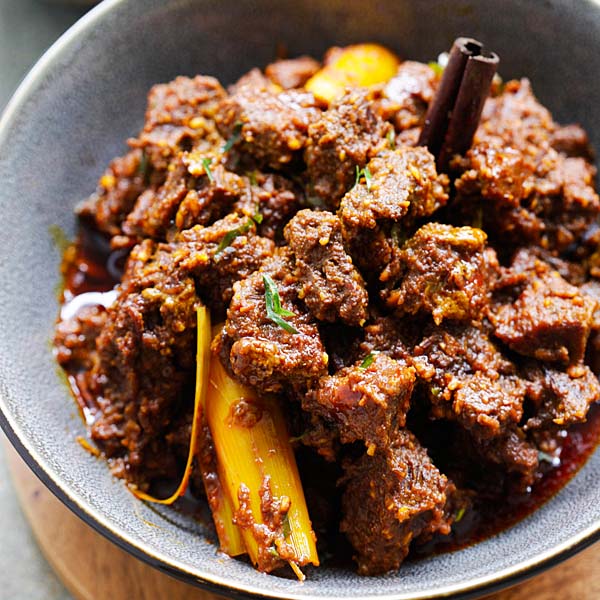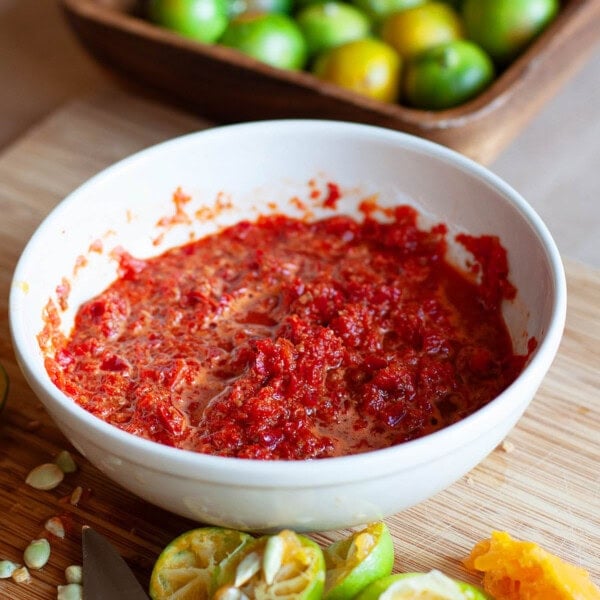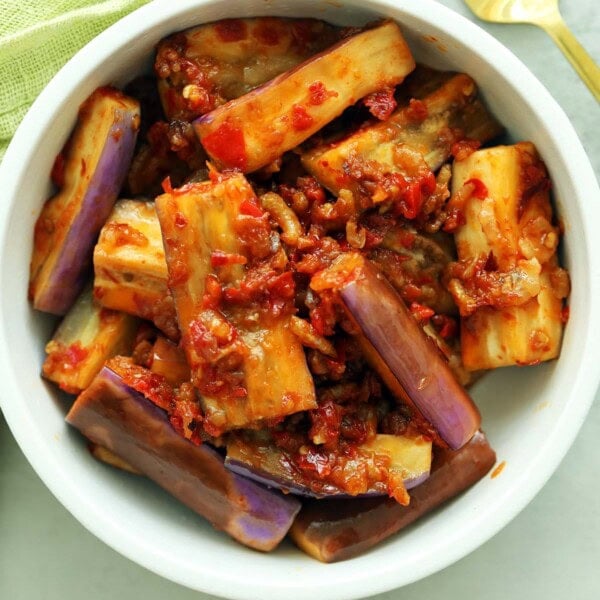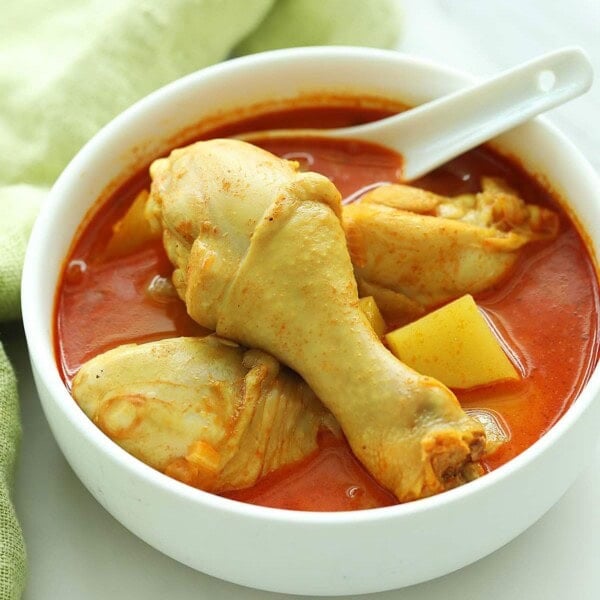This post may contain affiliate links. Please read my privacy policy.
Nasi Ulam is a fragrant, herbed rice dish popular in Malaysia. This easy and authentic recipe combines steamed rice with fresh herbs, dried shrimp, and toasted coconut for a delicious and aromatic meal.
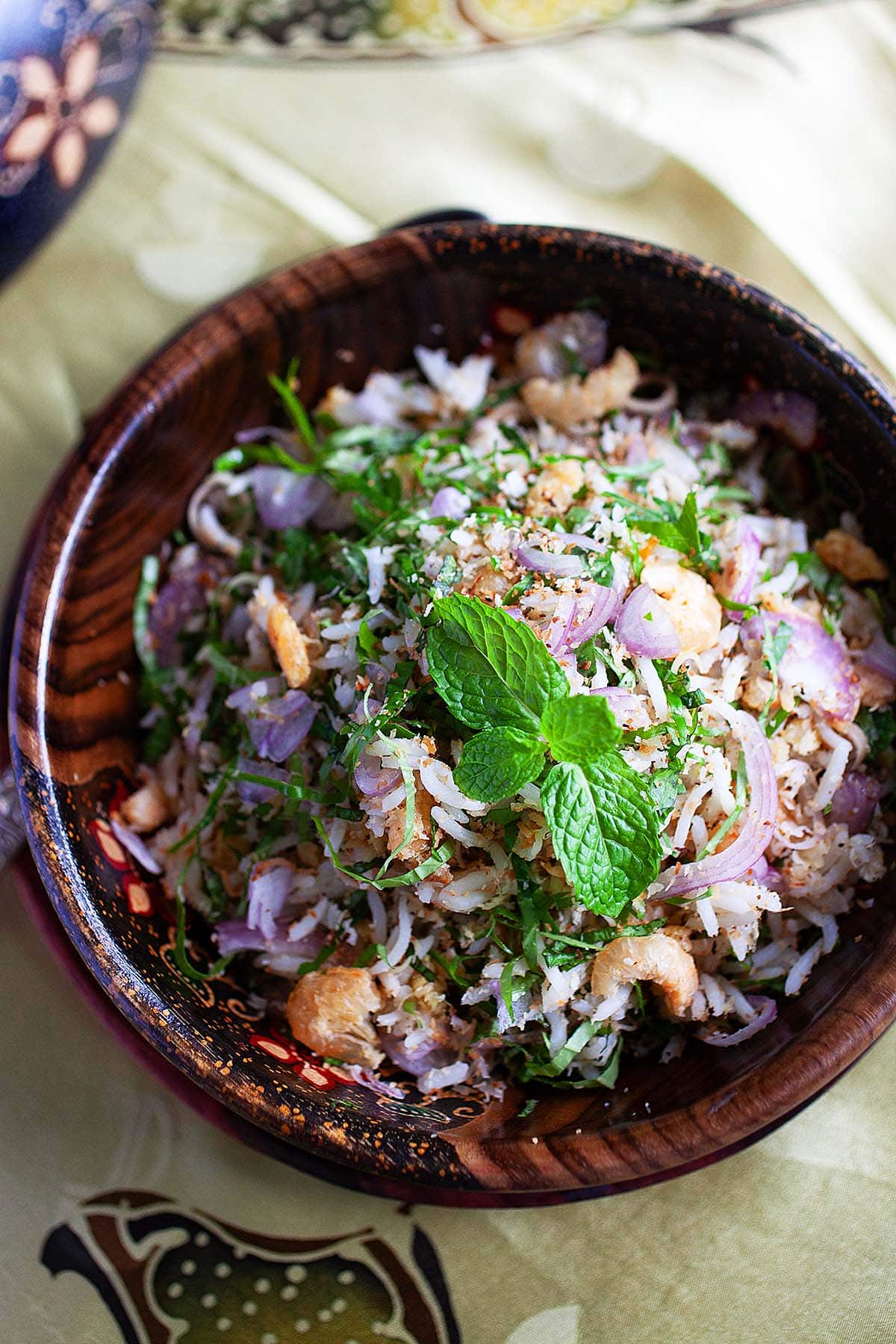
Herbed Rice
Nasi Ulam is Malaysian herbed rice, cherished by many in Malaysia, especially the Malays and the Nyonya Peranakan (Straits-born Chinese). This traditional dish is a delightful mix of steamed white rice with various local herbs, tossed with toasted coconut (kerisik), sliced shallots, lemongrass and dried shrimp. It’s a much-celebrated recipe for many Malaysians.
In Malaysia’s diverse, multi-ethnic society, consisting of Malays, Chinese, Indians, and Eurasians, nasi ulam herb rice is beloved by people from all backgrounds, regardless of race, ethnicity, religion, or origin.
The appeal of Nasi Ulam is clear: it’s incredibly delicious, aromatic, healthy, and highly appetizing. It pairs wonderfully with a side of meat or fish but can also stand alone as a complete meal.
For more easy and delicious Malaysian recipes, check out my Nasi Lemak next!
Herb Rice Recipe
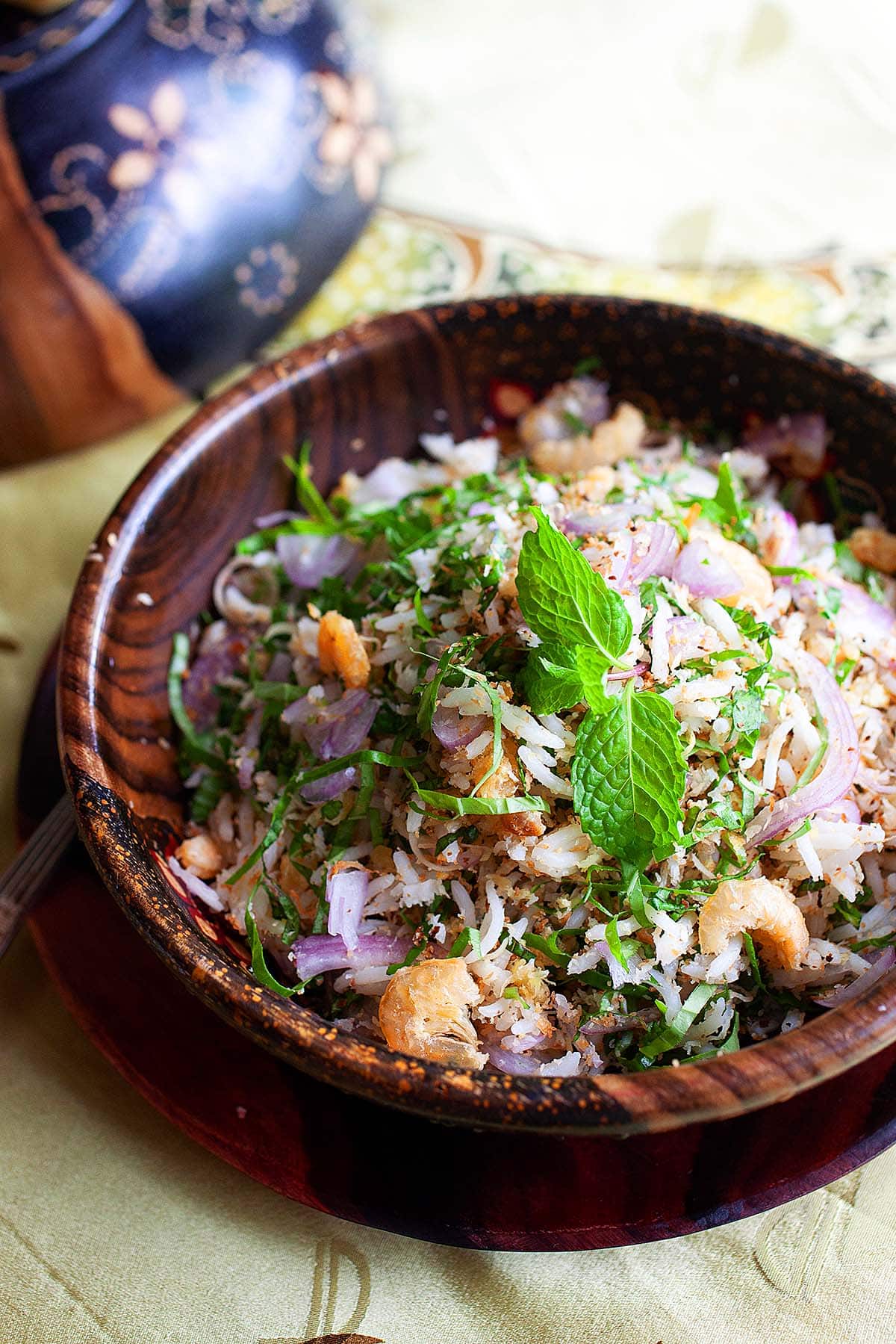
Nasi Ulam combines “nasi,” meaning rice in Malay, and “ulam,” which refers to the assortment of herbs traditionally served with meals, hence this iconic herb rice dish is named after the main ingredients.
In Malaysia, ulam is often compared to a salad and typically eaten with sambal belacan, our beloved spicy condiment.
For herbed rice recipe, the herbs are finely sliced and mixed directly into the rice along with other flavorful ingredients.
The result is a uniquely Malaysian dish that blends the exotic, earthy aromas of various herbs with dry-toasted shredded coconut (kerisik) and rice, creating a richly fragrant and deliciously satisfying meal.
Ingredients
In my childhood, I loved watching my Nyonya grandmother prepare this recipe. It was a family affair, with my mother and aunt helping her slice a variety of herbs. Here are the list of ingredients needed:
- Steamed rice
- Dried shrimp
- Toasted coconut or kerisik
- Lemongrass and shallots
- Daun kadok (wild betel leaf), daun Kesom (polygonum leaf or Vietnamese mint leaf), daun kunyit (turmeric leaf), mint leaves
- Bunga kantan (torch ginger flower)
- Kaffir lime leaf
- Bird’s eye chilis or Thai chilies, optional
Many of these herbs grew in our family garden, making it easy to gather fresh ingredients. Outside of Malaysia, some of these exotic herbs can be hard to find, so I’ve adapted my recipe to make it more accessible.
A trip to your local Asian market, especially Vietnamese or Thai grocery stores, should help you find most of the ingredients needed for this delicious dish.
How To Make Herbed Rice
Making this is not hard, but it does require some time, much like nasi lemak, Malaysia’s national dish.
However, I can assure you that the end result is rewarding, as once you have tried this, especially toying with the interplay of the different herbs in this mixed herb rice, you will be instantly converted.
Helpful Tips For Home Cooks
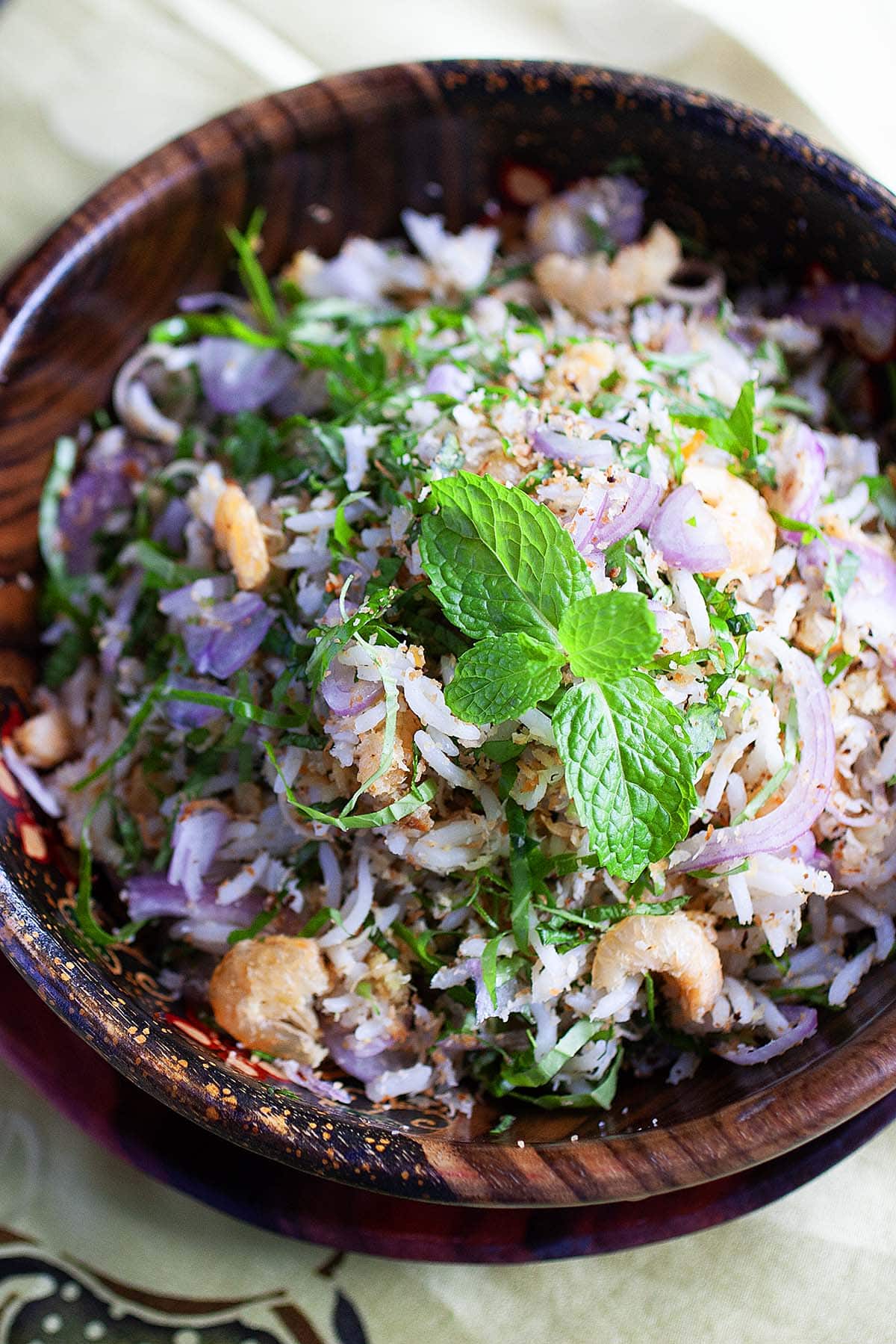
To make authentic herbed rice at home, please follow my cooking tips below:
- Herbs: Use a variety of fresh herbs to get the authentic flavor. You can experiment with different herbs based on availability.
- Coconut: If you can’t find fresh grated coconut, you can use desiccated coconut and toast it in the same way.
- Adjusting heat: Control the heat by adjusting the amount of bird’s eye chilies according to your taste.
Frequently Asked Questions
Yes, absolutely. If you can’t find specific herbs like daun kadok, daun kesom, you can skip them altogether, or use more Thai basil and mint leaves, or add cilantro as substitutes.
I use jasmine rice, but any long grain rice will be ideal. Avoid short grain rice or Calrose rise. You may use basmati rice, or even brown rice. Just make sure you don’t use rice that is sticky in texture to make herb rice.
Nasi Ulam can be spicy depending on the amount of bird’s eye chilies used. You can adjust the level of spiciness to your preference by adding more or fewer chilies. In my recipe, bird’s eyed chilies are optional.
Yes, you sure can! It can be made vegetarian or vegan by omitting the dried shrimp and substituting it with chopped peanuts for added texture and flavor. Use only plant-based ingredients to make the recipe vegetarian or vegan.
Yes! Dried anchovies or ikan bilis is a great substitute.
Just fry them on medium-low heat until crispy. You may add fried achovies as toppings, or chop them coarsely before adding to the rice.
This recipe is only 277 calories per serving.
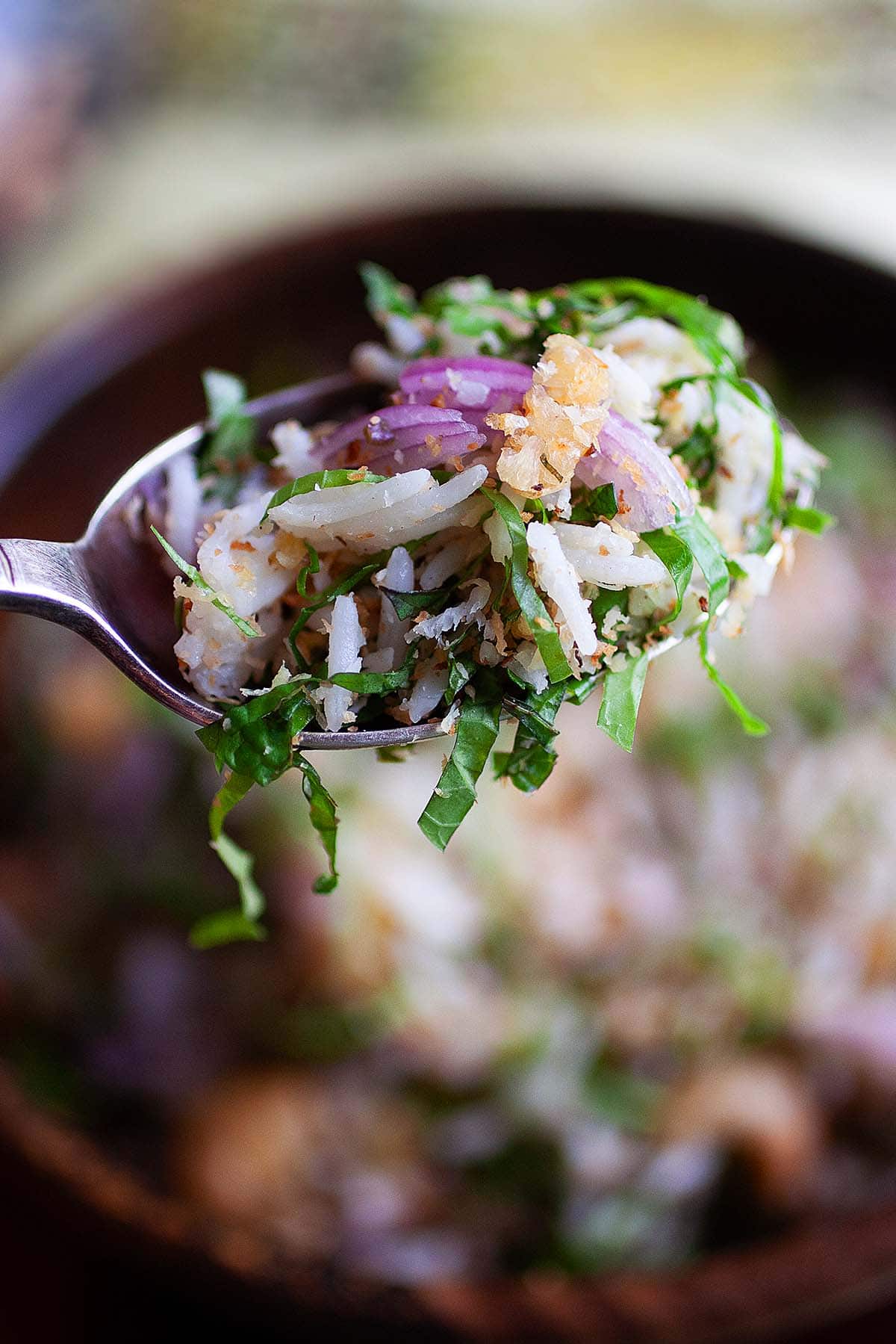
What To Serve with Nasi Ulam
For a wholesome Malaysian meal at home, I recommend the following recipes.
I hope you enjoy this post as much as I do. If you try my recipe, please leave a comment and consider giving it a 5-star rating. For more easy and delicious recipes, explore my Recipe Index, and stay updated by subscribing to my newsletter and following me on Facebook, Pinterest, and Instagram for new updates.
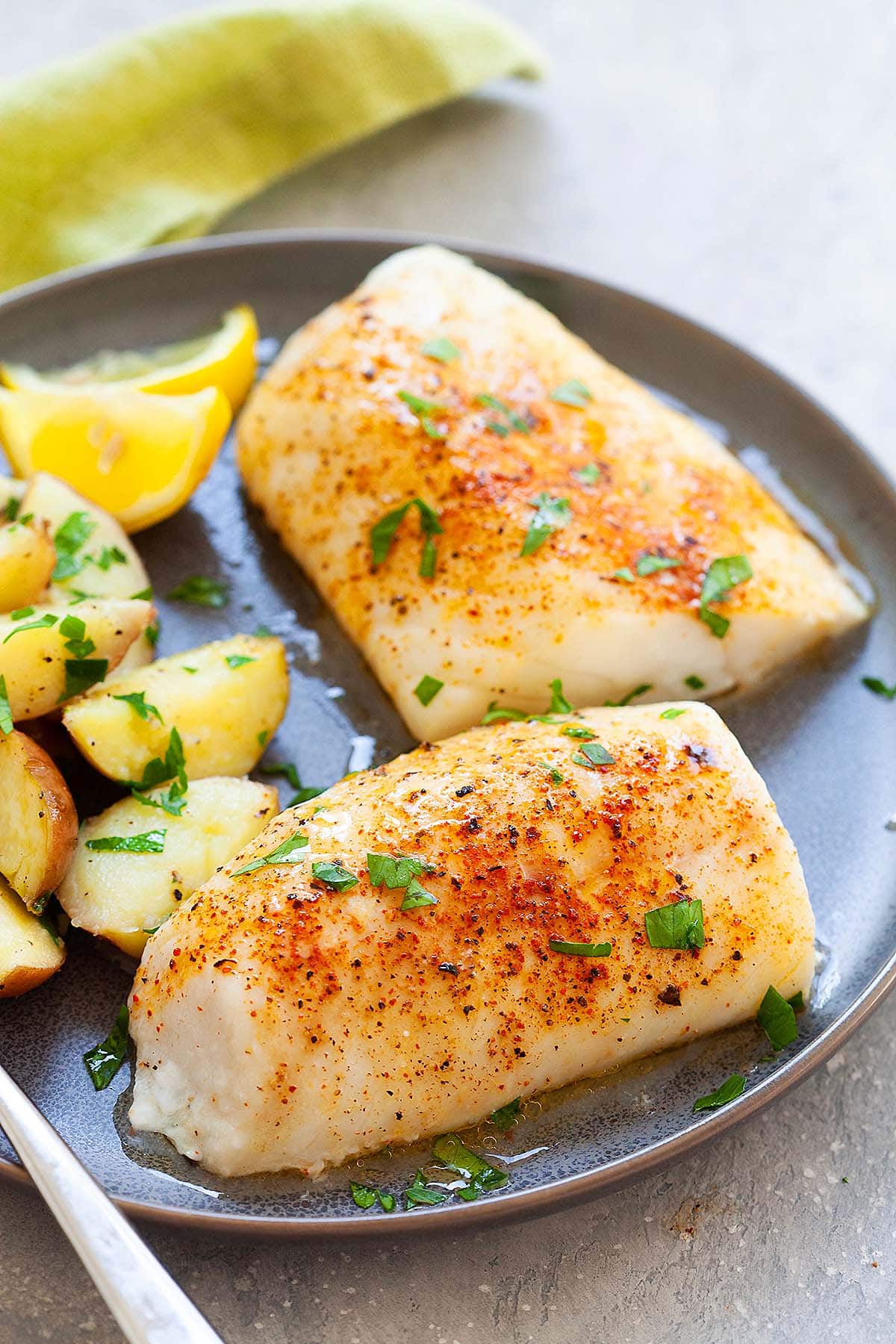
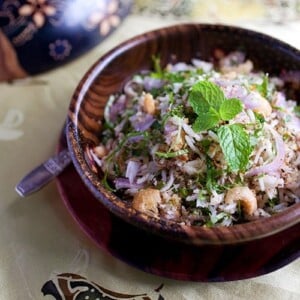
Herbed Rice Recipe (Nasi Ulam)
Ingredients
- 1/3 cup dried shrimp
- 1/2 cup fresh or frozen shredded coconut
- 2 cups cooked rice, chilled
- 5-6 daun kadok, wild betel leaves, finely sliced
- 1/4 cup Thai basil leaves, finely sliced
- 1/4 cup mint leaves, finely sliced
- 1/4 cup daun kesom, polygonum leaves, finely sliced
- 3 kaffir lime leaves, finely sliced
- 5 shallots, peeled and thinly sliced
- 1 lemongrass, white part only, thinly sliced
- 1 teaspoon salt
- 1 teaspoon sugar
- 3 dashes white pepper powder
- 3 dashes black pepper powder
Instructions
- Soak the dried shrimp in warm water until softened. Coarsely pound them using a mortar and pestle. Heat a wok and dry toast the pounded shrimp until they are dry or fragrant, being careful not to burn them.
- Make the shredded coconut into kerisik by stir-frying it continuously in a wok until it turns golden brown. Transfer to the mortar and pestle and pound until fine. Set aside.
- In a large bowl, combine the cooked rice with all the herbs, shallots, toasted coconut, and dried shrimp. Add the salt, sugar, and peppers, and toss to combine well. Serve immediately.
Notes
Nutrition
Nutrition information is automatically calculated, so should only be used as an approximation.
